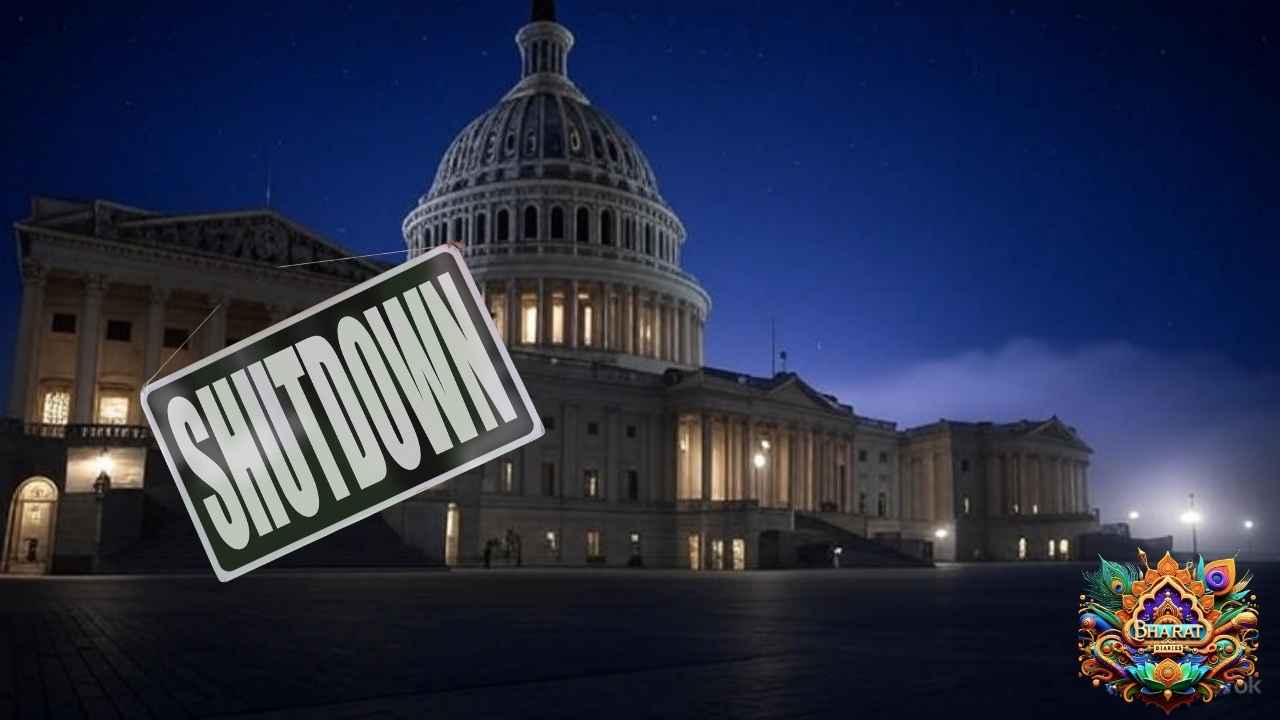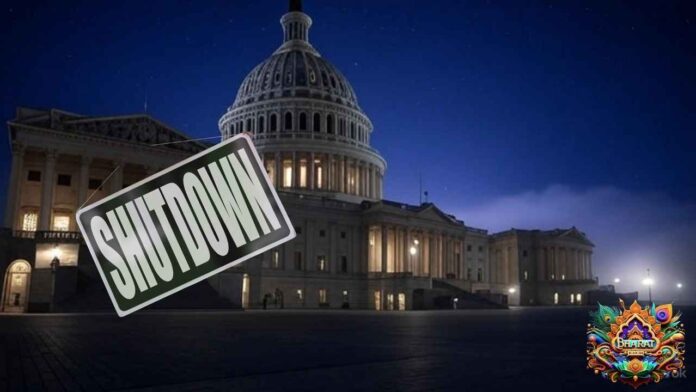
Explore the shutdown in America, its causes under Donald Trump, impacts on the economy, and global effects including France. Get the facts on this major event.
Table of Contents
Hey there, reader! Imagine waking up to news that parts of the U.S. government have hit the pause button. That’s exactly what’s happening with the shutdown in America right now. As of October 2025, the federal government is in a shutdown mode, affecting millions of lives. If you’re wondering what this means, why it’s unfolding, and how it ripples out, you’ve come to the right place.
In this blog post, we’ll break down the shutdown in America in simple terms. We’ll start with the basics: what it is and why it’s hitting the headlines. Then, we’ll dive into the reasons behind it, especially with Donald Trump back in the spotlight. You’ll learn about the impacts on everyday Americans, the economy, and even globally – yes, including places like France. We’ll also check if this could spark similar issues in other countries and how the private sector is taking a hit.
By the end, you’ll have a clear picture, backed by real examples and stats. Stick around – this isn’t just politics; it’s about real people and real effects. Let’s get into it!
https://bharatdiaries.com/michigan-church-shooting-what-happened-in-grand-blanc/
What Is a Shutdown in America?
A government shutdown in America happens when Congress can’t agree on funding the federal government. It’s like the government running out of money for non-essential operations. This isn’t new – it’s the 11th time in U.S. history, but the third under President Donald Trump.
In simple words, the shutdown starts when the fiscal year begins without approved budgets. For 2025, it kicked off on October 1 at 12:01 a.m. EDT. Essential services keep going, like Social Security payments and military operations. But many others stop or slow down.
Think of it as a forced break for government workers. About 900,000 federal employees get furloughed – that’s sent home without pay. Another 700,000 work but don’t get paid until it’s over. Agencies like the National Institutes of Health (NIH) and Centers for Disease Control (CDC) face disruptions.
This shutdown stems from a lapsed continuing resolution – a temporary funding bill. Without it, the government can’t spend on certain areas. It’s not a full stop; air traffic controllers and border patrol stay on duty. But parks close, and data reports halt.
For context, the longest shutdown was 35 days in 2018-2019, also under Trump. This one is already three days in and counting. It’s a political tool, often used in budget fights.
Why Is the Shutdown Happening in America?
The shutdown in America boils down to gridlock in Congress. Republicans and Democrats couldn’t agree on funding for the 2026 fiscal year.
At the heart? Disagreements over spending levels, foreign aid cuts, and health insurance subsidies. President Donald Trump pushed for a “clean” continuing resolution – no extras. He wanted to rescind $9 billion in foreign aid and public broadcasting funds, plus another $5 billion in aid cuts.
Democrats fought back, demanding extensions for health subsidies. Votes failed: The House passed a Republican plan, but the Senate filibustered it. A last-minute Oval Office meeting with Trump, Chuck Schumer, and Hakeem Jeffries went nowhere.
Trump blamed Democrats publicly, even posting an AI-generated video mocking them. His administration sees this as a chance for mass layoffs, targeting what he calls “Democrat Agencies.”
This echoes past shutdowns. In 2018, it was over border wall funding. Now, it’s about cuts and subsidies. With Trump in office after the 2024 election, his influence is key. He signed the Rescissions Act in July 2025, enabling these cuts.
Stats show partisanship at play: Republicans control the House, Democrats the Senate. No compromise means shutdown.
Impact of the Shutdown in America
The shutdown in America hits hard at home. Let’s break it down.
First, economic blows. The White House estimates $15 billion in GDP loss per week. That’s from delayed spending and furloughs. Consumer spending drops by $30 billion in a month-long shutdown, half from direct federal pay cuts.
Markets react too. The U.S. dollar and Treasury securities fell before the shutdown, signaling uncertainty. Private job reports from ADP showed 32,000 losses in September 2025, linked to the looming crisis.
Socially, it’s tough. Furloughed workers face bills without pay. Programs like WIC (for women, infants, children) risk running out of funds. Medicare and Medicaid continue, but new cards or appeals slow.
Travel suffers: Airports see longer lines with unpaid TSA agents. National parks close, hurting tourism. In 2018, this cost $500 million in lost revenue.
Health and science take hits. NIH research pauses, CDC monitoring slows. One example: During past shutdowns, flu tracking delayed, risking outbreaks.
Education? Student aid processes stall. Veterans’ benefits might delay.
Overall, it’s a drag on growth. The Council of Economic Advisers warns of long-term effects from lapsed contracts and reduced demand.
A Quick Comparison: This Shutdown vs. Past Ones
Here’s a table comparing the 2025 shutdown to the 2018-2019 one:
| Aspect | 2025 Shutdown | 2018-2019 Shutdown |
|---|---|---|
| Duration (so far) | 3+ days (ongoing) | 35 days |
| Workers Furloughed | ~900,000 | ~800,000 |
| Key Issue | Foreign aid cuts, subsidies | Border wall funding |
| Economic Cost/Week | $15B GDP loss | ~$3B GDP loss (total $11B) |
| President Involved | Donald Trump | Donald Trump |
This shows patterns under Trump, but higher costs now due to inflation and bigger budgets.
Global Impact of the Shutdown in America
The shutdown in America doesn’t stay in America. It ripples worldwide.
Economically, the falling U.S. dollar affects global trade. Countries holding Treasuries see value drops, hurting investors in Europe and Asia.
Foreign aid cuts – $14 billion total – hit recipient nations. Think less support for Ukraine or Israel, straining alliances.
Immigration delays affect global businesses. U.S. consulates slow visa processing, impacting international workers and students.
Travel takes a hit: $1 billion lost weekly in U.S. tourism, affecting airlines from France and beyond. European news outlets like France24 warn of disruptions in loans and permits.
In France, media covers it heavily, noting potential Franco-American tensions. If aid cuts persist, it could strain NATO or trade deals. Europe worries about U.S. instability affecting markets – stock exchanges in Paris dipped slightly post-shutdown.
No major global recession yet, but prolonged shutdowns could raise borrowing costs worldwide. One stat: Past shutdowns shaved 0.1-0.2% off global GDP growth.
For businesses, supply chains slow if U.S. permits halt. Example: A French wine exporter might face delayed FDA approvals.
Overall, it’s a reminder of America’s economic weight.
Could This Lead to Shutdowns in Other Countries?
Short answer: Unlikely. The shutdown in America hasn’t directly caused shutdowns elsewhere – yet.
Government funding works differently globally. In France, for instance, budgets pass via parliamentary votes, but strikes or protests are more common than full shutdowns.
No reports link the U.S. event to foreign shutdowns. However, if global markets tank, countries like France might face budget pressures. European nations watch closely, as U.S. aid cuts could force them to fill gaps, straining their finances.
In rare cases, U.S. events inspire political tactics abroad. But for now, no chain reaction. France’s own political issues, like recent instability, are separate.
If this drags on, indirect effects like reduced U.S. imports could hurt exporters in other countries, but not cause shutdowns.
How the Private Sector Suffers from the Shutdown in America
The private sector feels the pinch from the shutdown in America. Here’s how:
- Delayed Contracts and Payments: Government buys from private firms – think defense or tech. Stalls mean lost revenue. Example: A small contractor in Virginia might wait months for payment, risking bankruptcy.
- Regulatory Slowdowns: Need FDA approval for a drug? Or EPA permits? They’re paused, halting product launches. Pharma companies lose millions daily.
- Reduced Demand: Furloughed workers spend less. The $30 billion monthly consumer drop hits retail, restaurants. One study: Each shutdown week costs private income $5-10 billion.
- Workforce Issues: Employers relying on E-Verify for hiring can’t check status. Immigration delays mean talent shortages.
- Market Volatility: Stocks dip, credit tightens. Airlines face delays from unpaid controllers, costing $100 million/day in past shutdowns.
Bullet points on sectors hit hardest:
- Travel and Hospitality: Airport chaos, park closures.
- Tech and Defense: Contract freezes.
- Agriculture: Delayed inspections, export halts.
- Finance: Economic data gaps lead to poor decisions.
Case study: During 2013’s shutdown, Boeing lost $100 million daily from FAA delays. Now, with bigger stakes, private losses could top $10 billion weekly.
Businesses adapt by lobbying or cutting costs, but small firms suffer most.
FAQ: Common Questions About the Shutdown in America
What exactly is the shutdown in America?
It’s when non-essential federal services stop due to no funding agreement.
Why is Donald Trump involved in the shutdown in America?
As president, he pushes for cuts and blames Democrats for the impasse.
What are the impacts of the shutdown in America on daily life?
Furloughs, program delays, longer airport lines – real hassles for many.
Does the shutdown in America affect France or other countries?
Yes, through aid cuts and market ripples, but no direct shutdowns elsewhere.
How does the private sector suffer from the shutdown in America?
From contract delays to reduced spending, businesses lose billions.
When will the shutdown in America end?
It depends on Congress; past ones lasted days to weeks.
Wrapping Up: Key Takeaways from the Shutdown in America
We’ve covered a lot on the shutdown in America – from its basics and causes under Donald Trump to U.S. and global impacts, including ripples to France. It’s a mix of politics and real-world pain: $15B weekly GDP hits, furloughs, and private sector woes like delayed contracts.
Remember, this isn’t just numbers; it’s people waiting for paychecks or businesses stalling. Globally, it shakes confidence, but no other shutdowns yet.
What do you think? Will it end soon? Share your thoughts in the comments, or pass this post along. Subscribe for updates on big events like this. Stay informed – knowledge is power!
